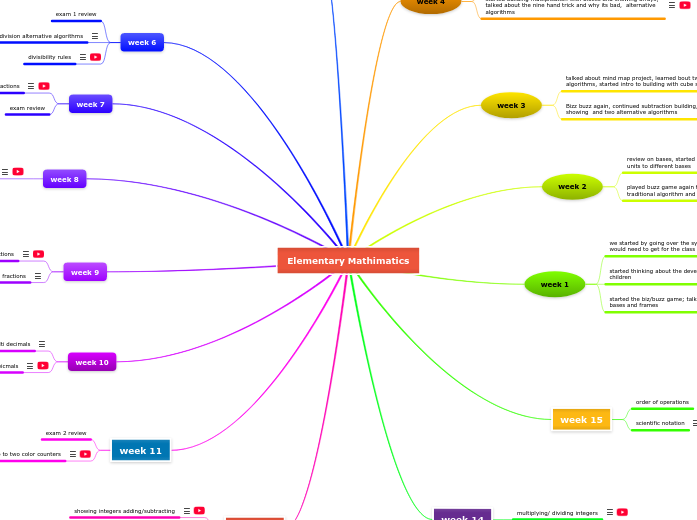Elementary Mathimatics
week 4
started multiplication, talked about the importance of understanding what it means not just the answers, three different models of multiplication
started building multiplication with blocks and showing arrays, talked about the nine hand trick and why its bad, alternative algorithms
week 3
talked about mind map project, learned bout two new algorithms, started intro to building with cube subtraction
Bizz buzz again, continued subtraction building, started showing and two alternative algorithms
week 2
review on bases, started using blocks to build conversions of units to different bases
played buzz game again talked about the flaws of the traditional algorithm and alternative algorithms for addition
week 1
we started by going over the syllabus and the material that we would need to get for the class
started thinking about the developments for math in young children
started the biz/buzz game; talked more about other kinds of bases and frames
week 15
order of operations
scientific notation
week 14
multiplying/ dividing integers
week 5
learned automaticity, the order to learn the multiplication table, why timed test are bad, practiced more with the alternative algorithms
learned subtraction alternative algorithms almost the same as addition, expanded form, equal addends
week 6
exam 1 review
division alternative algorithms
divisibility rules
week 7
division wrap up/ intro to fractions
exam review
week 8
solving fractions
week 9
multiplying fractions/dividing fractions
building/showing fractions
week 10
show add/sub/multi decimals
solving deicmals
week 11
exam 2 review
intro to two color counters
week 13
showing integers adding/subtracting
solving integers adding/subtracting
